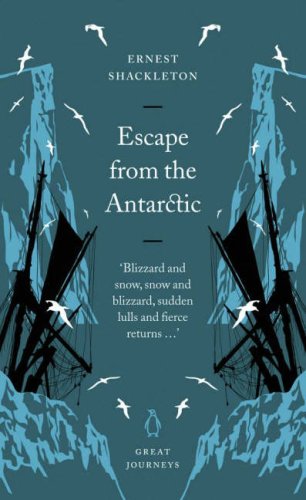This Side of Paradise - a peek into the life of F. Scott Fitzgerald
My first attempt to read this book was on a plane, four years ago. I had been going through some tough times, and as I plodded through the first fifty pages, my mind kept wandering. I grew tired of the apparently carefree protagonist - who had the romantic name of Amory Blaine - and ultimately tossed this to the Not Finishing stack with a single comment: "Weird book so far."
Having finished the book now, I would word it a bit differently: "Weird book, but oddly rewarding."
If you are a reader who can love a book for the sake of its writing, This Side of Paradise is just your sort of book. It is written in a series of vignettes and takes place over the course of Amory's childhood, youth, college years, and early adulthood. Much like the crisp narrative of The Great Gatsby, each scene has its own particular mood and brilliancy, and the effect is a chocolate box of impressions, some bitter and some sweet.
This eerie surrealism comes back again and again in the plotline. The best example, and my favorite part of the book, was Amory's vision of the man with the pointed shoes. It was almost Dostoyevskian and could be a short story in itself. It was also completely unlike the rest of the story, and, more than a welcome diversion, made me think about him from a different light.
My motivation for coming back to This Side of Paradise was to get into the 1920s, but it went further than that - I entered an entire American subculture, which was so specific to the early 20th century and yet also specific to the wealthy class that it seems to be its own microcosm. I felt both connected to Amory and distinctly alienated from his way of life and thinking. Perhaps this is because, under the purple ties and flowery speech, he is just a twenty-something like me.
3.5 out of 5 stars. This Side of Paradise was weird, but worthwhile.
Having finished the book now, I would word it a bit differently: "Weird book, but oddly rewarding."
If you are a reader who can love a book for the sake of its writing, This Side of Paradise is just your sort of book. It is written in a series of vignettes and takes place over the course of Amory's childhood, youth, college years, and early adulthood. Much like the crisp narrative of The Great Gatsby, each scene has its own particular mood and brilliancy, and the effect is a chocolate box of impressions, some bitter and some sweet.
Youth is like having a big plate of candy. Sentimentalists think they want to be in the pure, simple state they were in before they ate the candy. They don't. They just want the fun of eating it all over again.There is a great deal of bitter in Amory's life, as it turns out. Born into wealth, he drifts through childhood with not too much schooling and eases into Princeton University with more than academics on his mind. Campus drama appeals to him, yet he realizes he is always a little different than his peers, fitting not neatly into some clique or crowd mentality. Amory adores poetry and falls in love many times and in many different ways. His listless egotism, however, holds happiness at arm's length. "It was always the becoming he dreamed of, never the being."
This eerie surrealism comes back again and again in the plotline. The best example, and my favorite part of the book, was Amory's vision of the man with the pointed shoes. It was almost Dostoyevskian and could be a short story in itself. It was also completely unlike the rest of the story, and, more than a welcome diversion, made me think about him from a different light.
My motivation for coming back to This Side of Paradise was to get into the 1920s, but it went further than that - I entered an entire American subculture, which was so specific to the early 20th century and yet also specific to the wealthy class that it seems to be its own microcosm. I felt both connected to Amory and distinctly alienated from his way of life and thinking. Perhaps this is because, under the purple ties and flowery speech, he is just a twenty-something like me.
3.5 out of 5 stars. This Side of Paradise was weird, but worthwhile.




Comments
I'm really intrigued by your review, especially your Dostoyevskian description, so I can't wait to dive in. : )